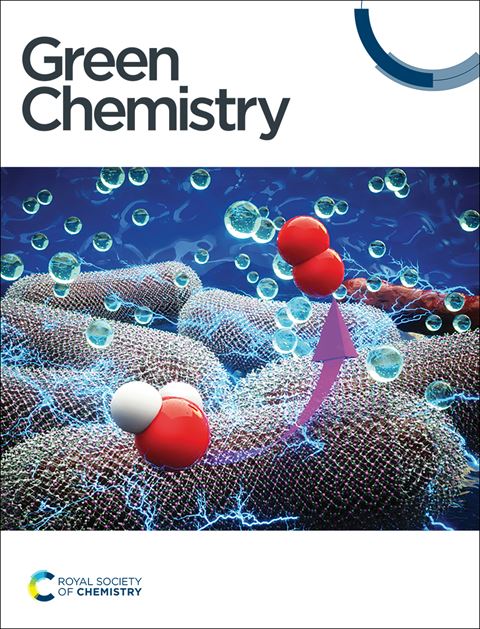温和条件下烯烃自由基阴离子电催化线性偶联研究
IF 9.3
1区 化学
Q1 CHEMISTRY, MULTIDISCIPLINARY
引用次数: 0
摘要
烯烃的还原偶联是一种有效的策略,直接从现成的散装化学原料构建碳-碳键。本文提出了烯烃直接线性耦合的一步电催化方案。在电化学条件下,不需要化学计量量的危险有机锂试剂,就可以生成关键中间体,一种高度不稳定的自由基阴离子。自由基阴离子经过随后的自由基加成反应,通过质子捕获和/或氢原子转移过程形成目标化合物。该策略支持烯烃的均偶联和交叉偶联反应,并已成功应用于生物活性分子的合成。电氧化还原催化为烯烃生成自由基阴离子提供了一种简单有效的方法,为这些高活性中间体在没有金属和氧化剂/还原剂的温和条件下在化学合成中的广泛应用铺平了道路。本文章由计算机程序翻译,如有差异,请以英文原文为准。
Electrocatalytic linear coupling of alkenes via radical anion under mild conditions†
The reductive coupling of alkenes is an efficient strategy for directly constructing C–C bonds from readily available bulk chemical feedstocks. Herein, a one-step electrocatalytic protocol is proposed for the direct linear coupling of alkenes. Under electrochemical conditions, the key intermediate, a highly unstable radical anion, is generated without the need for stoichiometric amounts of dangerous organolithium reagents. The radical anion undergoes a subsequent radical addition reaction, and the target compound is formed through proton capture and/or hydrogen atom transfer processes. This strategy supports both homo-coupling and cross-coupling reactions of alkenes and has been successfully applied to the synthesis of bioactive molecules. Electroredox catalysis provides a straightforward and efficient method for generating radical anions from alkenes, paving the way for the wide application of these highly reactive intermediates in chemical synthesis under mild conditions in the absence of metal and oxidant/reductant.
求助全文
通过发布文献求助,成功后即可免费获取论文全文。
去求助
来源期刊

Green Chemistry
化学-化学综合
CiteScore
16.10
自引率
7.10%
发文量
677
审稿时长
1.4 months
期刊介绍:
Green Chemistry is a journal that provides a unique forum for the publication of innovative research on the development of alternative green and sustainable technologies. The scope of Green Chemistry is based on the definition proposed by Anastas and Warner (Green Chemistry: Theory and Practice, P T Anastas and J C Warner, Oxford University Press, Oxford, 1998), which defines green chemistry as the utilisation of a set of principles that reduces or eliminates the use or generation of hazardous substances in the design, manufacture and application of chemical products. Green Chemistry aims to reduce the environmental impact of the chemical enterprise by developing a technology base that is inherently non-toxic to living things and the environment. The journal welcomes submissions on all aspects of research relating to this endeavor and publishes original and significant cutting-edge research that is likely to be of wide general appeal. For a work to be published, it must present a significant advance in green chemistry, including a comparison with existing methods and a demonstration of advantages over those methods.
 求助内容:
求助内容: 应助结果提醒方式:
应助结果提醒方式:


